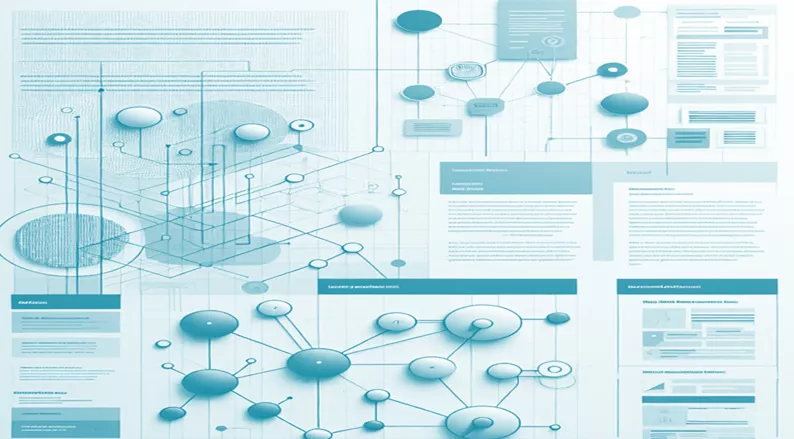Reducing Latency in Real-Time Medical Monitoring to enhance speed, accuracy and patient safety.
Latency in medical monitoring refers to the time delay between data acquisition (e.g., a sensor detecting a physiological parameter) and the system's response (e.g., displaying the value or triggering an alert). It is critical in healthcare applications where real-time monitoring and rapid decision-making can be lifesaving.

Sources of Latency in Medical Systems
- Sensor Processing Delay – The time sensors take to detect and preprocess signals.
- Data Transmission Delay – The lag due to wireless/wired communication between devices.
- Processing and Computation Delay – The time required for algorithms to analyse data and generate insights.
- Network Latency – If cloud-based systems are involved, internet bandwidth and congestion add delays.
- User Interface Delay – Time taken to display data on screens or trigger alarms.
Impact of High Latency on Medical Monitoring
High latency in medical devices can lead to:
- Delayed diagnosis & intervention – In critical cases like cardiac monitoring or glucose level tracking, high latency can lead to missed alerts, delaying medical response.
- Inaccurate decision-making – A delayed or outdated reading can mislead healthcare professionals, affecting treatment.
- Patient safety risks – In emergency settings like ICU or remote patient monitoring, slow data updates can lead to fatal outcomes.
- Reduced device reliability – High latency decreases trust in medical devices, making them less effective for real-time applications.
- Regulatory & compliance issues – Medical devices must meet stringent latency standards (e.g., FDA or IEC regulations). Failure to do so can prevent approval for clinical use.
Strategies to Reduce Latency
Efficient sensor data acquisition
- Interrupt-driven design: Use interrupts to capture sensor data immediately rather than relying on polling, which can introduce delays.
- Prioritizing critical signals: Assign higher priority to critical signals, such as arrhythmias in ECG, to ensure faster processing.
- ADC optimization: Use high-speed Analog-to-Digital Converters (ADCs) and ensure proper calibration for quick and accurate data capture.
Improving communication efficiency
- Optimize data packets: Use compressed or lightweight data formats to reduce the time required for transmission.
- Low-latency communication protocols: Choose protocols like Bluetooth Low Energy (BLE), Zigbee, or Wi-Fi 6 that are optimized for low-latency applications.
- Prioritized data transmission: Implement Quality of Service (QoS) to prioritize critical data (e.g., alerts) over less urgent information.
- Edge processing: Perform preliminary data analysis on the device itself, reducing the need to send raw data to the cloud for processing.
Reducing transmission delays
- Adaptive sampling rates: Dynamically adjust the frequency of data sampling and transmission based on the device's state or patient condition.
- Network optimization: Implement techniques like channel hopping or adaptive power transmission to minimize network congestion.
- Batching data: Transmit data in bulk during low-priority intervals while maintaining immediate transmission for critical alerts.
Enhancing response systems
- Immediate feedback mechanisms: Ensure firmware can trigger alerts (visual, auditory, or haptic) locally on the device without relying on external systems.
- Real-time event handling: Use watchdog timers and event-driven programming to rapidly detect and respond to critical events.
- Closed-loop control: In devices like insulin pumps, firmware should enable real-time adjustments based on monitored data.
Testing and validation for latency reduction
- Latency profiling tools: Use tools to measure latency at each stage of data flow within the device. For example, measure sensor-to-firmware latency using logic analysers or oscilloscopes and test communication latency using network analysers.
- Simulation environments: Test firmware in real-world scenarios to validate latency reduction techniques.
- Stress testing: Evaluate performance under high data loads or adverse conditions to identify bottlenecks.
Challenges in Reducing Latency
Firmware optimization techniques such as efficient data acquisition, low-latency communication, and real-time event handling help reduce delays, yet several challenges persist, which can be due to:
- Hardware constraints: Limited memory, processing power, or communication bandwidth.
- Complex signal processing: High-fidelity sensors require more processing time to ensure accuracy.
- Regulatory compliance: Strict standards like ISO 13485 may restrict the implementation of certain latency-reducing techniques without exhaustive testing.
Addressing these challenges requires a careful balance between performance, efficiency, and safety, ensuring that medical devices operate reliably in diverse healthcare environments.
How Decos can help?
At Decos, we specialize in developing high-performance, low-latency firmware solutions for medical devices, ensuring real-time monitoring with precision and reliability. Our expertise in efficient data processing, optimized communication protocols, and edge computing enables seamless, low-latency performance while maintaining energy efficiency for battery-powered devices. By leveraging AI-driven analytics, advanced microcontroller architectures, and robust real-time operating systems (RTOS), we help medical device manufacturers overcome hardware limitations and regulatory constraints. With a commitment to innovation and compliance, Decos ensures that healthcare providers and patients receive instant, accurate, and life-saving data when it matters most.

This blog is written by Vandana Dharmrajram, Senior Firmware Engineer at Decos. She is an expert in embedded systems development, specializing in real-time solutions for medical devices. With expertise in low-level hardware integration and compliance with standards like IEC 62304, Vandana drives innovation in firmware architecture and optimization.
Decos is a cutting-edge technology services partner, addressing diverse industry needs across various, including medical domain. If you have any questions or would like advice on your project or proof of concept (POC), contact Devesh Agarwal. We'd love to connect with you!
Discover more

Transforming Instructions for Use (IFU) with AI: Enhancing Technical Documentation

Building Better Digital Experiences with Information Architecture

